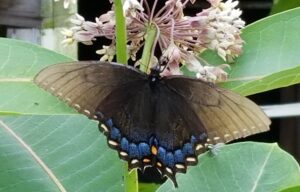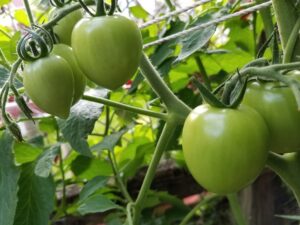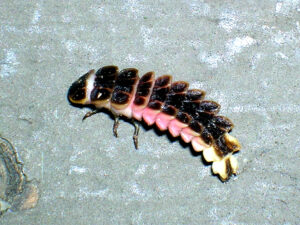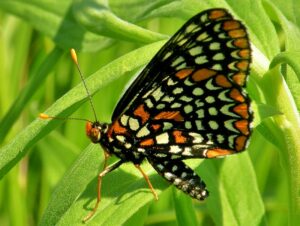Black Gardeners Matter, Too
Podcast: Play in new window | Download (Duration: 1:32:57 — 40.9MB)
Subscribe: Apple Podcasts | Spotify | Android | iHeartRadio | Podchaser | Email | TuneIn | RSS | More
(July 5, 2020) What the heck is going on in the City of Elmhurst, Illinois, a suburb of Chicago? Do they not understand that we’re in the middle of a pandemic? Do they not understand that growing food in your own backyard is important? Do they not understand that there is a shift towards social justice in America? In other words, do they not understand that Black Gardeners Matter, Too?
Skip to a specific segment in this podcast
3:32 Debbie Trueblood from Illinois Park and Recreation Association
26:02 Holly and Joey Baird of The Wisconsin Vegetable Gardener
47:50 Nicole Virgil
1:10:23 Doug Taron, PhD, from the Peggy Notebaert Nature Museum
1:24:04 Meteorologist Rick DiMaio
It’s difficult to decipher the reasoning behind the hard line they’ve taken against backyard gardener Nicole Virgil. Virgil, who is black, has been on The Mike Nowak Show with Peggy Malecki several times. The last was in March, 2020 just before the COVID-19 crisis hit. Here’s what I wrote then.
In 2017, Nicole Virgil appeared on our show to talk about a fight she had been having with the city of Elmhurst, Illinois for two years. The issue was a hoop house in her family’s backyard, constructed to extend their growing season. Sustainability in action, right? But the city told them to take it down because it violated some kind of ordinance about allowed structures. As she writes, “The City of Elmhurst applied the permanent building code to the Virgil family’s temporary membrane structure to claim it’s illegal, while allowing other membrane structures all over town.”
When she stopped by again last year, that issue had not been resolved. That was after three city council meetings, five development planning meetings and three zoning and planning commission meetings. Getting frustrated with lack of response from her own municipality, Virgil decided that it was time to get serious. She created the Right to Garden website and YouTube channel. And she went to the Illinois General Assembly.
The Right to Garden Act has been introduced in the Illinois House (HB4704) and Senate (SB3329). The chief House sponsor is State Representative Sonya Harper of the Illinois 6th Legislative District. The primary Senate sponsor is State Senator Scott M. Bennett of the 52nd District.
Nicole Virgil is smart, dedicated to sustainable practices (i.e., growing your own food), and easy to like. She’s the kind of person you want as a neighbor. In all, she has been fighting for her right to garden in her own backyard using sophisticated and reasonable methods for about five years. During that time, from my own observations, she has been extremely reluctant to use words like “discrimination.” However, in a recent letter to Illinois Lieutenant Governor Juliana Stratton, she wondered if that’s what she is seeing from a city that seems to be inconsistent how it applies its laws.
3) There are membrane structures all over our town used on a temporary/seasonal/year-round basis – and the Mayor claims he can’t “see/find” them -and therefore can only enforce against mine, and the ones I tell him about (trying to encourage me to rat out my neighbors.)
4) The City has thwarted the process at every turn, first denying to take up the issue in spite of months of community requests; then, once they took up the issue, they refused to put it on the agenda; then once they put it on the agenda, they refused to hear the expert testimony; they falsified data – all to stop me from sustaining my family through the winter.
Considering the shelter-in-place orders & supply chain-issues, it should be clearer than every that people should have the ability to feed themselves as much as possible, no?
What can we say about a municipal government that simultaneously directs us to stay at home, and squelches my ability to support myself and my community with just what is needed, clean, nutrient-dense food?
What other reason could there be besides racial discrimination, when they allow membrane structures in the back yards of so many other residents?
And, just this week, Virgil received more information, in the form of a document released via a Freedom of Information Act request. It is a letter to another resident with a membrane structure that is similar to Virgil’s. However, in this case, the City writes,
We’d like to discuss the matter with you and are asking your permission to perform an inspection on your property. After the inspection, we can work closely with you on the next steps, if any are necessary.
This is how Virgil responded to me.
WHAT?
What next steps?
When they saw my membrane structure the only “next steps” were – “TAKE IT DOWN!”
I am very suspicious now that they are going to try to find a way to allow her membrane structure while still banning mine.
Once again I ask, what the heck is going on in Elmhurst? Do Black Gardeners Matter, too? Is your answer very, very, very simple? Today, Nicole Virgil returns to the show to discuss this continuing, unnecessary and disheartening saga.
Unplugging Illinois
If I asked you what has helped keep you sane during the COVID-19 pandemic, many of you would talk about binge watching your favorite TV shows. Or texting your friends. Or keeping up with social media posts. Are you sensing a pattern? A lot of us have kept it together because of technology.
 However, I can honestly report to you that I have never had a better looking garden than my 2020 version. That’s because I’m out there every day–watering, pruning, grooming, observing, in a way I haven’t done in years. Yes, I do take a lot of photos, like the one on the left, but that’s still a connection with nature. However, wouldn’t it be great to get out to a state park or another recreational facility and see even more of nature?
However, I can honestly report to you that I have never had a better looking garden than my 2020 version. That’s because I’m out there every day–watering, pruning, grooming, observing, in a way I haven’t done in years. Yes, I do take a lot of photos, like the one on the left, but that’s still a connection with nature. However, wouldn’t it be great to get out to a state park or another recreational facility and see even more of nature?
This Saturday, July 11, the Illinois Park and Recreation Association presents its second annual Unplug Illinois Day. The idea is to get folks to “ditch the devices” and
get out, unplug, play and engage one another through their local park and recreation agencies. Whether you are biking with friends on your local trails, playing a sport or taking in a class, Illinois is home to thousands of parks and recreation facilities that can help you live a happier and healthier life.
It’s not just about unplugging from technology, it’s about
Enjoying the Benefits of Meditation
Discovering Summer Constellations (one of the things I did when I was a kid, when I thought I was going to grow up to be an astronomer. Well, things change.)
and more. We’re pleased to have Debbie Trueblood, MSW, IOM, CAE on the show with us this morning. She is Executive Director of the Illinois Park and Recreation Association.
Return of The Wisconsin Vegetable Gardener
As I mentioned earlier, I’ve spent a lot of time in my garden this COVID year. Kathleen and I have also paid much more attention to adding vegetables list of plants. In fact, early in the year, as I saw that it was going to be more important than ever to grow our own food, I ripped out a couple of sections of plants. Some of them were natives, others were spring bulbs that had already flowered. The point is that I needed more room to grow food. That’s life in a pandemic. I managed to give away most of those plants, so I have no regrets.

However, it’s challenging growing vegetables in my yard. Most veggies like full sun, but that’s in short supply in my yard. That’s mainly my fault, because I love trees and shrubs and I’ve planted a fair number of those over the years. So, it’s become a game of “find the sun.” Fortunately, after 20 years, I know exactly where there’s sun in my yard at any given time of year.
And I also know that plants can usually deal with being in close quarters to each other. Heck, it’s a way to save money on mulch. So, I’ve been tucking veggies into tight spots–pretty much wherever there’s a little sun and a little room. To date, we are growing these vegetables in our tiny (about 30 x 20′) yard.
Tomatoes (at last count, more than 70 fruits on nine plants)
Potatoes (not many–more of a nod to just wanting to grow some of my own)
Kale and baby leaf kale
Baby leaf chard
Beets (they are rocking!)
Beans (the vine types germinated, the bush types did not)
Peas (now that we’re into the heat of summer, I’m counting on a fall crop)
Summer squash
Zucchini
Cucumbers
Cantaloupe
Malabar spinach (an experiment–we’re growing it in a pot)
Asparagus (just in its second year, so no harvesting yet)
Egyptian walking onions
Strawberries (small crop this year)
Raspberries (just beginning to ripen)
And a whole bunch of leafy greens in pots and jars (thanks to Happy Leaf LED grow lights and Kathleen’s undying attention)
The beginning of July is a great time to talk about vegetables. So we’re happy to have our friends Holly and Joey Baird back on the show. Collectively, they are The Wisconsin Vegetable Gardener, a married couple who live just outside of Milwaukee, Wisconsin. However, their radio empire continues to expand. Their show airs weekly on 15 different radio stations in 9 different markets all over the U.S. from March to October.
Their goal is to “show the average person how easy it is to grow food, store food, and reuse everyday items.” Works for us. Today, we’ll talk about watering (now that we’ve entered a relatively dry period), when to harvest vegetables, and what you need to know about canning. Hit us with some questions on Facebook and Twitter, or call in at 877-711-5611.
The Year of the Firefly?
I happened to spot a very cool insect in my yard the other day. You can see the video here. Friend of the show Doug Taron identified it as a Nessus Sphinx Moth (Amphion floridensis). Doug Taron, PhD is Chief Curator of the Chicago Academy of Sciences (which you probably recognize as the Peggy Notebaert Nature Museum) and director of the Illinois Butterfly Monitoring Network.
When he wrote to identify the moth, Peggy and I realized that he hadn’t been on the show since September, 2019, so it was time to squeeze in a short segment about what he’s seeing in the insect world this year. His response was FIREFLIES! This is what he wrote.

We are right at the height of the firefly season. I think that might make for a fun discussion. They seem to be having a good year (at least in my neighborhood), probably aided by the wet spring. I’ve enclosed a photo of a firefly larva. [Image on the right] I’m

also having fun this summer doing the Nature Museum butterfly conservation work from my home. I’m rearing Baltimore Checkerspots on my screened porch. [Image on the left] I did several field releases at Bluff Spring Fen over the last week and a half.
We have all of twelve minutes to cover everything. So we’ll do the best we can. Meanwhile, Sheryl DeVore has an excellent article featuring Taron in Peggy Malecki’s July issue of Natural Awakenings Chicago Magazine.


